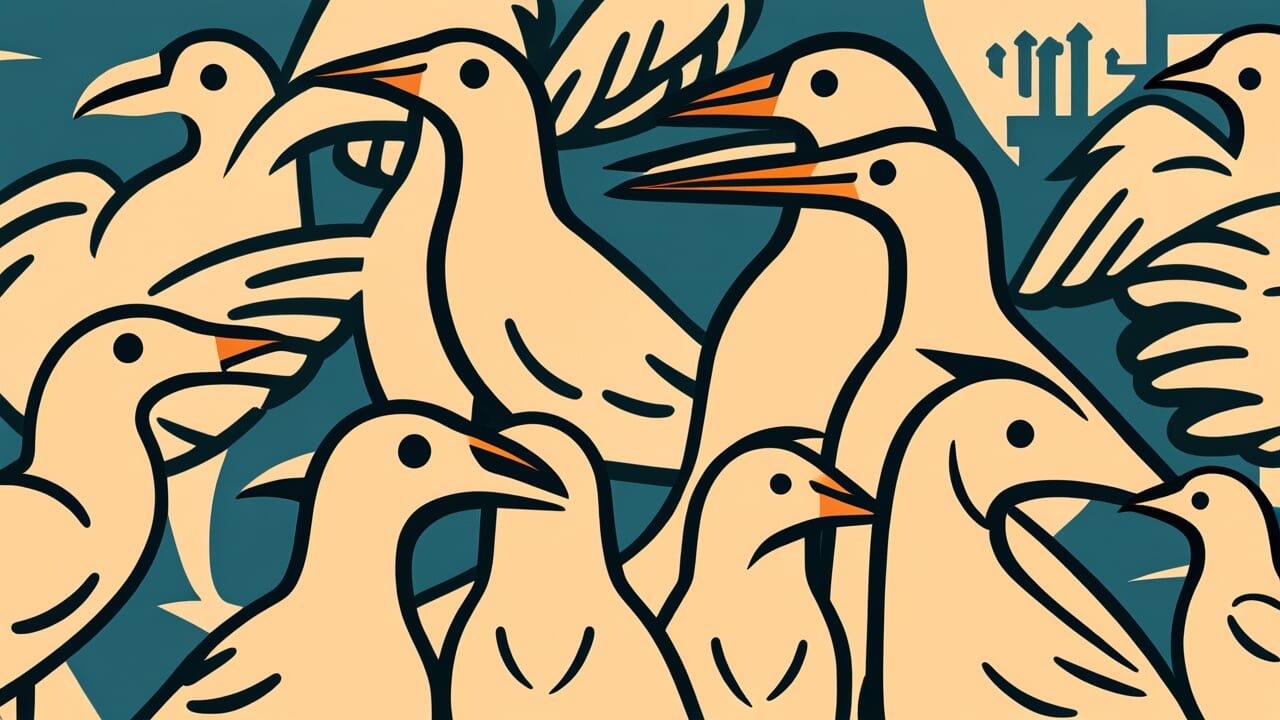How to Read “Even a hundred birds cannot match a single crane”
Kinchō, hyaku wo kazuuru to iedomo ikkaku ni shikazu
Meaning of “Even a hundred birds cannot match a single crane”
This proverb teaches that one excellent thing has more value than many mediocre things. Through the metaphor that a hundred ordinary birds cannot equal one noble crane, it emphasizes the importance of quality over quantity.
People use this saying when evaluating talent or making choices. It reminds us not to be fooled by large numbers but to recognize what is truly excellent.
In organizations, one outstanding person brings more value than hiring many average workers. In possessions, owning one high-quality item brings more richness than having many cheap things.
This expression remains relevant today as a reminder to value quality. In our age of mass production and consumption, this proverb helps us remember the importance of recognizing true value.
Origin and Etymology
This proverb likely comes from ancient Chinese classics. “Kinchō” means birds in general, while the crane has been regarded as a noble and elegant bird since ancient times.
In China, cranes were believed to carry immortals and symbolized longevity and dignity. This cultural background deeply influenced the creation of this proverb.
The expression that one crane has more value than a hundred ordinary birds is not just about numbers. It teaches the importance of quality.
The word “iedomo” is an old expression meaning “even though.” The entire proverb uses classical Chinese-influenced structure. This suggests it took root in Japan as Chinese thought and values spread.
In Japan too, cranes symbolize longevity and nobility, as in the saying “cranes live a thousand years.” This shared value system helped this proverb become part of Japanese culture.
The Eastern value of quality over quantity is expressed through the familiar image of birds. This makes it a deeply meaningful saying.
Interesting Facts
Cranes hold a special place in Japanese traditional culture. They frequently appear on wedding kimonos and decorations at celebrations.
Their graceful form and white feathers symbolize purity and dignity. Common people admired them greatly.
From an ecological perspective, cranes are truly special birds. Red-crowned cranes mate for life, making them symbols of marital harmony.
Their calls can be heard several kilometers away. This powerful presence sets them apart from other birds.
Usage Examples
- What this planning meeting needs is the spirit of “even a hundred birds cannot match a single crane” – one innovative proposal rather than a hundred mediocre ideas
- Rather than buying lots of cheap clothes, I want to follow the wisdom of “even a hundred birds cannot match a single crane” and cherish one outfit I truly love
Universal Wisdom
This proverb has been passed down because humans are easily deceived by numbers. We instinctively feel that more is better.
We feel secure when we have many choices. We feel richer when our possessions increase. But true richness and value may not lie there.
Our ancestors understood this human weakness. When we focus on quantity, we lose sight of what matters. Being surrounded by a hundred ordinary things does not satisfy the heart.
Instead, life becomes rich when we encounter one genuine thing, understand it deeply, and treasure it.
This wisdom applies to relationships too. One truly trustworthy friend matters more than many shallow acquaintances. One deep understanding matters more than lots of surface knowledge.
Modern society constantly demands “more” from us. But what our hearts truly seek may be “deeper.”
This proverb quietly teaches that qualitative fulfillment is true value, not quantitative abundance. This is a life truth that transcends time.
When AI Hears This
Claude Shannon, founder of information theory, expressed the information content of an event with a formula. That formula is “information = -log2(probability).”
In other words, the less likely something is to happen, the more information that event carries when it occurs.
Let’s calculate this concretely. Imagine a place with 100 common birds, and you see one more of the same bird. The probability of seeing that bird is nearly 100%, so the information content is almost zero.
In other words, it’s an “oh, that again” situation. Almost no new information enters your brain.
Now imagine a rarely seen crane appears. If its appearance probability is 1%, the information content is about 6.64 bits. This means you receive overwhelmingly more information in an instant than from seeing all 100 ordinary birds.
This principle underlies modern communication technology. Data compression assigns short codes to frequently appearing characters and long codes to rare ones.
Rare things have value not just aesthetically, but because they deliver more information to our brains. The moment you see a crane, massive neural circuits activate in your brain and create strong memories.
This proverb understood the essence of information.
Lessons for Today
This proverb teaches modern people the importance of selection and focus. In today’s society overflowing with information and endless choices, we tend to reach for everything.
What truly matters is developing the eye to recognize what is your “crane.”
In work, learning, and relationships, trying to treat everything equally makes everything half-hearted. Instead, have the courage to concentrate your time and energy on what you believe in.
That becomes the key to enriching your life.
Cherish a few friends with whom you truly connect rather than connecting with hundreds on social media. Study one field deeply rather than chasing trendy information.
Choose things you can truly love rather than owning many possessions. Such a way of living will bring you genuine fulfillment.
The attitude of pursuing quality rather than quantity is the wisdom we need to live in modern times.



Comments